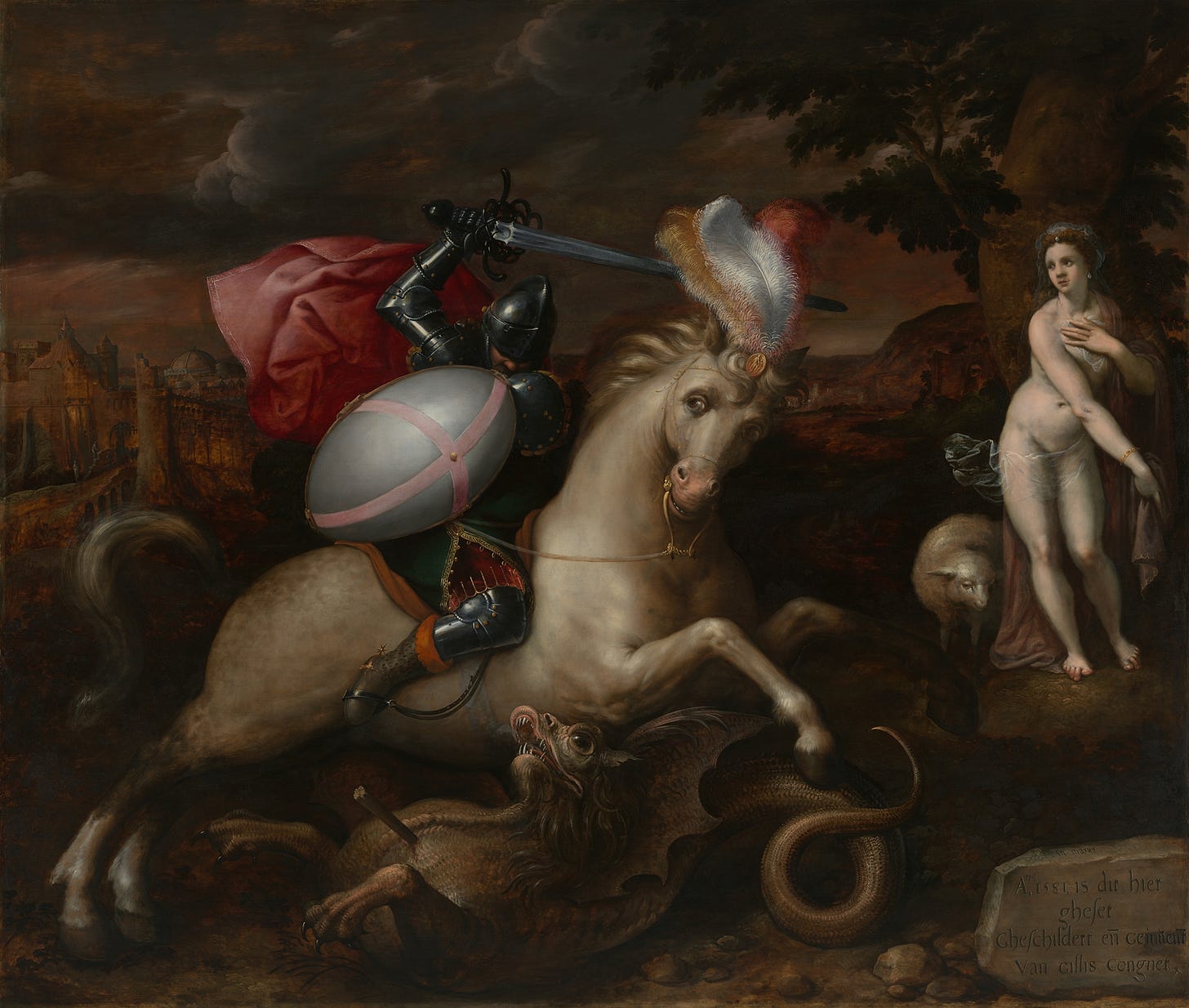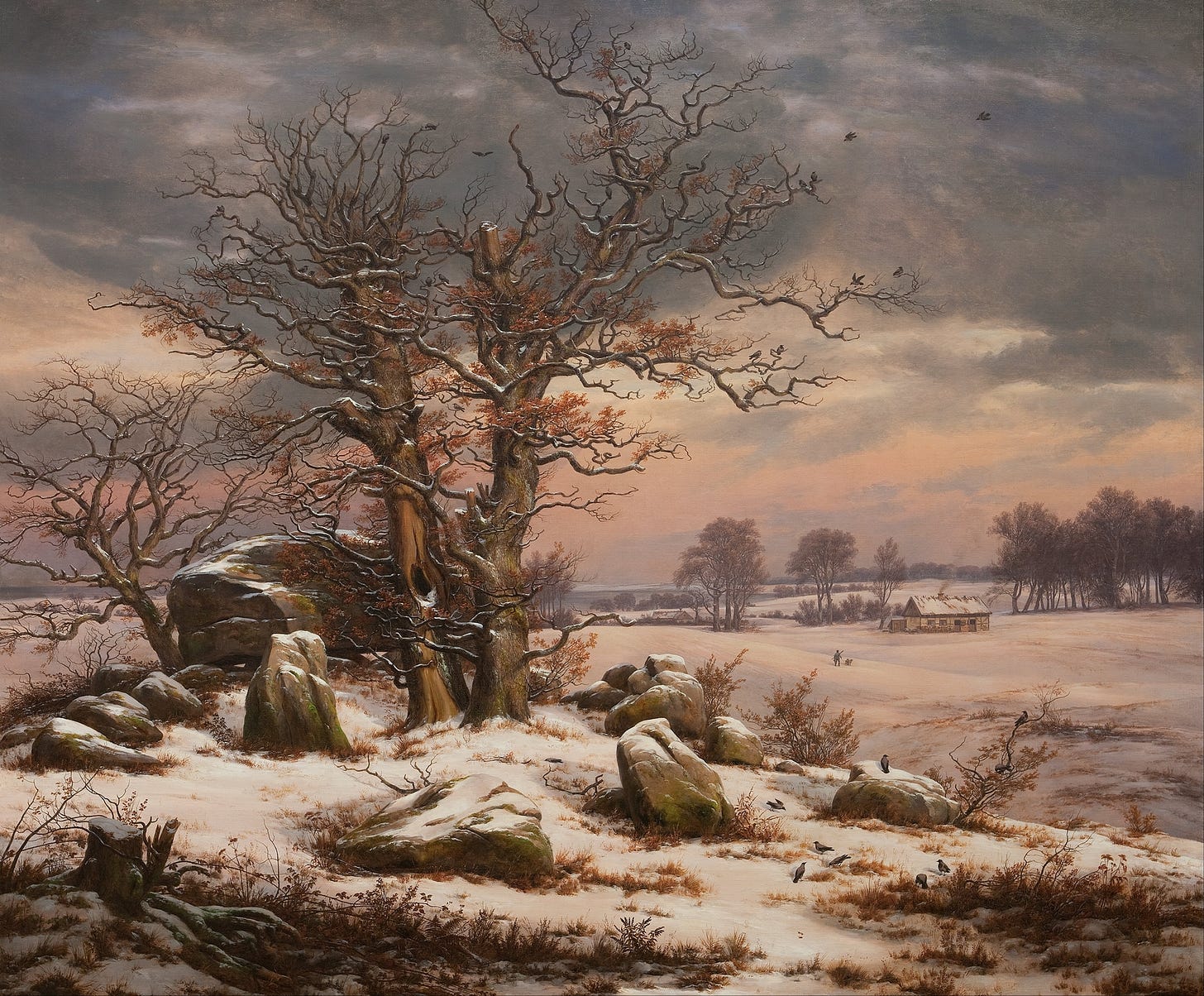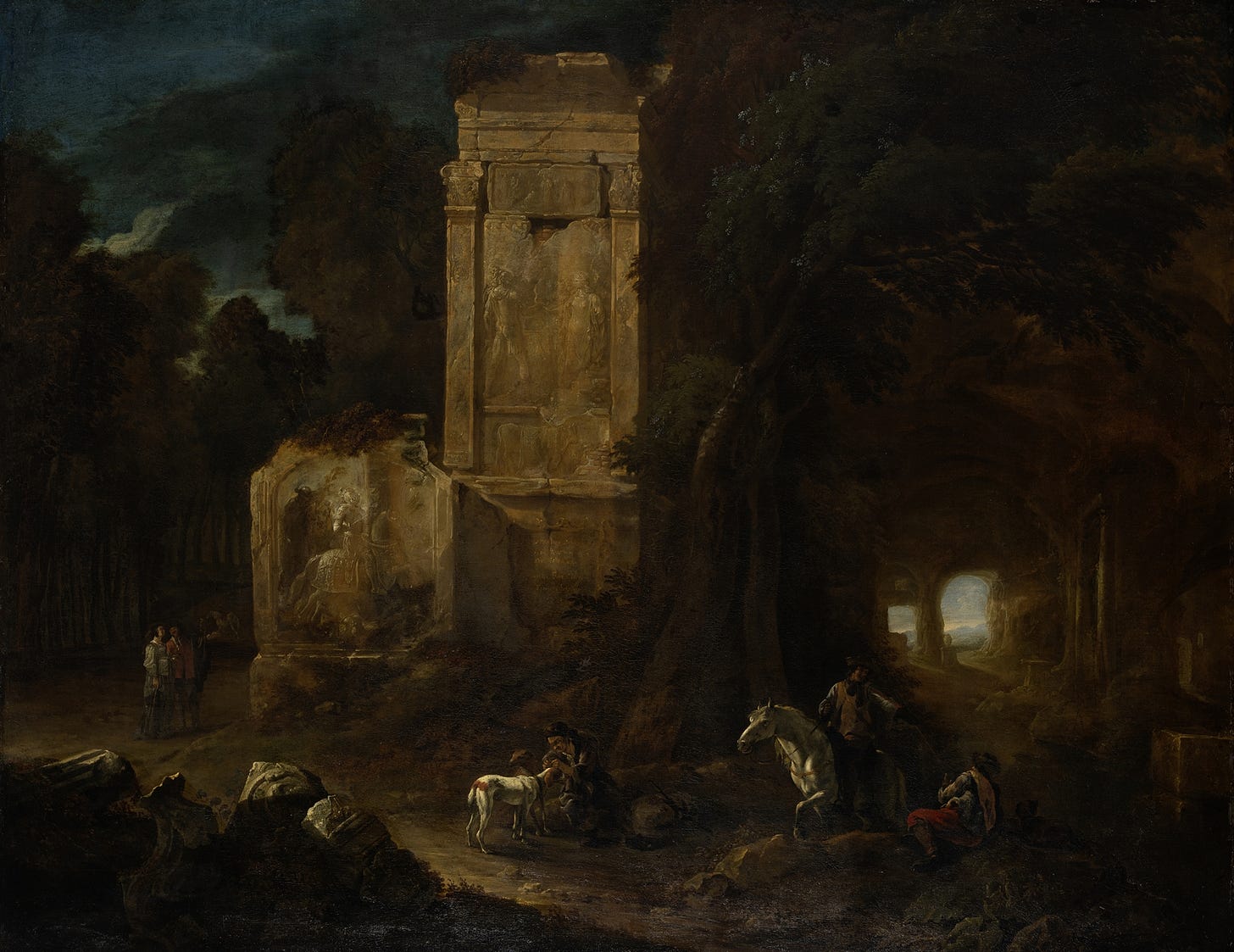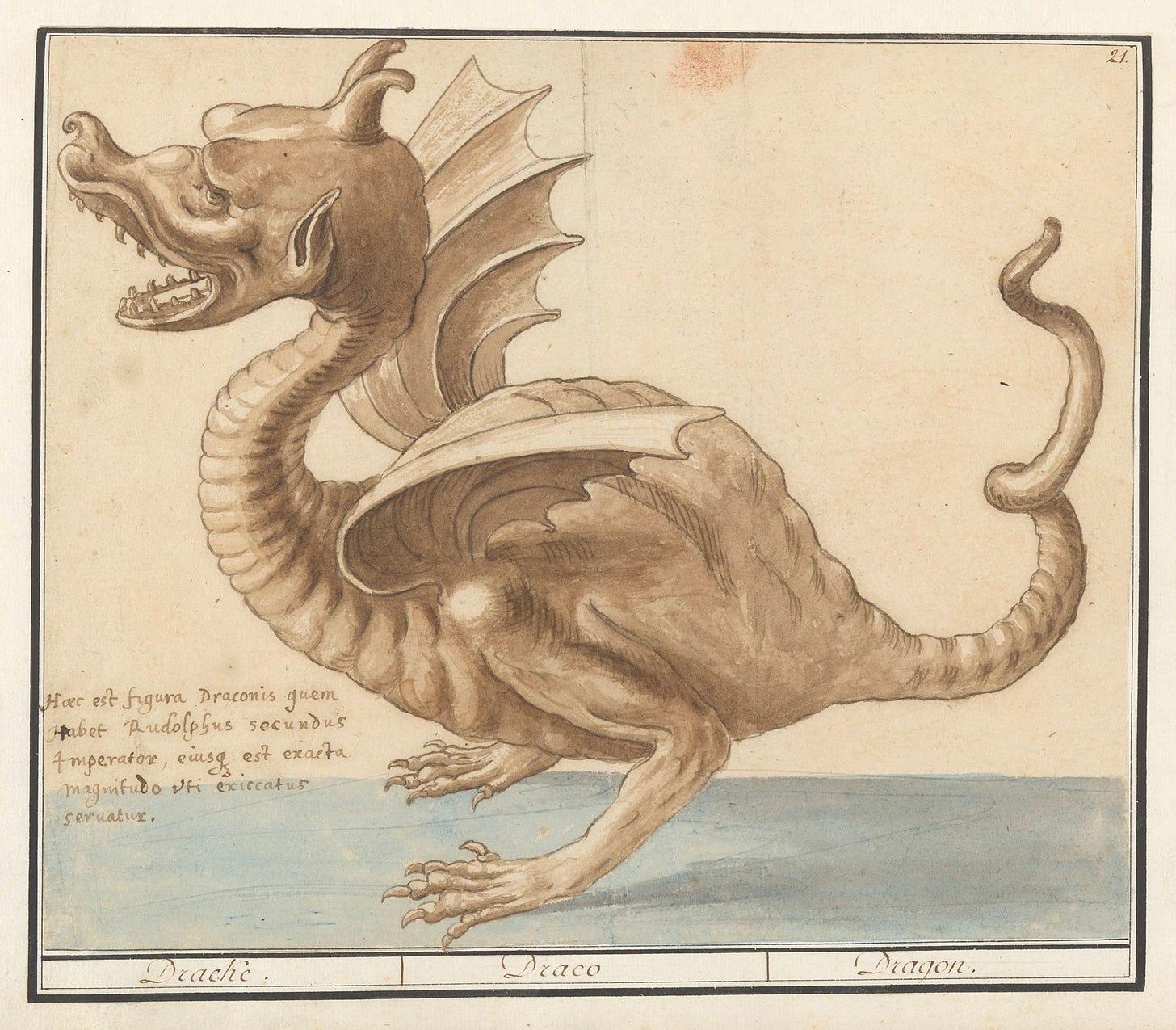Is Beowulf based on true events?
The real history behind the poem
If you wrote a novel today with the plot of Beowulf, it would be shelved in the fantasy section. If you haven’t read it, the plot goes something like this:
A hero travels from his homeland to another kingdom, kills a pair of fearsome monsters, and returns to rule over his own land before eventually slaying a dragon and dying in the process.
But if Beowulf is fantasy, it’s not the kind of fantasy that takes place in an imaginary world.
Beowulf is set in what is very much a version of our own world. Some of the places mentioned in the poem you can still visit today, most of the peoples can be identified with actual historical societies, and at least one of the characters was a real person whose life we know something about.
So if Beowulf is fantasy, it’s historical fantasy. And from the clues in the text itself, we can even give a rough date to the events of the poem.
So… where and when is Beowulf set?
The “where” question is easier to answer than the “when.”
You're reading The Dead Language Society. I'm Colin Gorrie, linguist, ancient language teacher, and your guide through the history of the English language and its relatives.
Subscribe for a free issue every Wednesday, or upgrade to support my mission of bringing historical linguistics out of the ivory tower and receive two extra Saturday deep-dives per month.
If you upgrade, you’ll also be able to join our ongoing Beowulf Book Club and watch our discussion of the first 400 lines right away. Our next meeting is Thursday, August 14, 3:30–5:00pm Eastern.
The very first line of Beowulf extols the great deeds of the Gardene ‘Spear-Danes’ in former times, and over half of the poem is spent in the kingdom of the Danes, in the company of the descendants of these ancient heroes.
Denmark, in its earliest days, was centred around the island of Zealand (Danish Sjælland), where Copenhagen is located today, and Scania (Swedish Skåne), the part of modern-day Sweden immediately opposite Zealand.
Somewhere within the realm of the Danes is the site of Heorot, the great hall of the Danish king Hrothgar.
Many scholars believe that Heorot was located at a place called Lejre, in northern Zealand. Although it is a small village today, Lejre has long been held by tradition to be the place where the first kings of the Danes ruled.
This traditional identification has been bolstered by archaeological evidence unearthed in recent decades, which has confirmed the existence of a complex at Lejre dating back to the mid-sixth century.
But Beowulf himself was not a Dane; he was a Geat (pronounced in Old English roughly like yat). He had to travel to Heorot from his homeland by sea. But the identity of the Geats, and the location of their homeland, is not as straightforward to figure out.
Most scholars believe that the Geats mentioned in Beowulf are the same people as the Gautar mentioned in Old Norse sources.
The Gautar were a people inhabiting the region of modern-day Sweden just to the northwest of Scania, today called Västergötland, which corresponds to the meaning ‘Land of the West Gautar.’ Linguistically, the name Gautar is an exact match for the Old English Geatas (the plural of Geat).
Other scholars, a minority, believe that the Geats of Beowulf correspond to the inhabitants of Gotland, an island off the southeastern coast of Sweden.
The name of the inhabitants of Gotland, Gotar in Old Norse, isn’t an exact match to the Old English form Geatas. But both are derived from the same root, as is the name of the more famous Germanic people, the Goths.
Even today, the relationship between all of these names, and all of these peoples, is not entirely clear. But the Geats of Beowulf likely correspond to one or another of these early Scandinavian groups.
This fixes the answer to the “where” question: Beowulf takes place in southern Scandinavia, on the island of Zealand, and in the land of the Geats, which is either in southern Sweden or just off the coast of it.1
But what about the “when” question?
When did this all take place?
The manuscript which contains Beowulf — yes, manuscript, singular: there’s only one — can be dated to the period between AD 975–1025. So if Beowulf is based on historical events, those events must have taken place earlier than that.
But for a long time, it wasn’t clear exactly how much earlier.
That changed when the Danish polymath N. F. S. Grundtvig (1783–1872) discovered that one of the events referred to in Beowulf is actually recorded by the Gallo-Roman historian Gregory of Tours (c. AD 538–594) in his work Decem libri historiarum ‘Ten books of histories’, also known as History of the Franks.
In this book, Gregory writes of the reign of the Frankish king Theodericus I (reigned as King of Metz from 511–534):
Dani cum rege suo nomen Chlochilaichum evectu navale per mare Gallias appetunt.
‘The Danes, with their king Chlochilaichus, attacked Gaul by means of a sea invasion.’
He goes on to say that the Franks repelled the invasion and killed Chlochilaichus in the process. This matches up almost exactly with what is described as the fate of the Geatish king Hygelac in Beowulf:
Þone hrinġ hæfde Hiġelāc Ġēata,
nefa Swertinges nȳhstan sīðe,
…
Ġehwearf þā in Francna fæþm feorh cyninges,
brēostġewǣdu, ond se bēah somod.‘Hygelac of the Geats had that ring,
the Grandson of Swerting, on his last journey,
…
The king’s life went then into the embrace of the Franks,
The corselets, and the ring as well.’ (1202–3, 1210–11)
Even the name Chlochilaichus is a fair Latin approximation of the Proto-Germanic form of Hygelac’s name: *Hugilaikaz.2 The only difference is that Gregory of Tours calls Chlochilaichus a Dane. Another Frankish chronicle calls him a Goth, which, as we saw above, is a name closely related to Geat.
If we’re able to look past that difference — this sort of confusion between different early Germanic peoples on the part of the Romans and their descendants is not unheard of — we can identify the poet’s Hygelac with the historian’s Chlochilaichus.
This means that Hygelac’s raid, which takes place in the middle of the chronology of the poem, has to have occurred between the years 511 and 534, dating the events of the poem to the late 5th century and the early 6th century.
In other words, Beowulf takes place in the waning days of the Early Germanic Iron Age, or the Migration Period, the span of time from AD 400–450.
It was initiated by the fall of the Western Roman Empire, an event which, although only completed in AD 476, was well underway by AD 400. It’s a period marked by an influx of gold into Scandinavia, gold which originated in territories once occupied by the Roman Empire.
It’s largely a prosperous time, but it all ends around AD 550, when the gold began to dry up.
The situation was worsened by a series of volcanic eruptions which began in 536, and which caused a rapid cooling of the climate and disruption to societies not only in Scandinavia but all over the world. Some suspect that the description of the Fimbulwinter of Norse Mythology, a harsh winter which sets in motion the events of Ragnarǫk, culminating in the end of the world, has its origin in a memory of this period.
So if the timeline suggested by Gregory of Tours is roughly accurate, it does something to explain the pessimistic tone of the latter third of the poem. Not only is Beowulf’s reign coming to an end, but so is the whole golden age of the Migration Period.
What lay ahead was something much harsher. Here be dragons, indeed.
But was there really a dragon?
But what about the dragon? Was that historical?
Or the character of Beowulf, a hero with the strength of thirty men in his hands? Is he historical?
And what about the ogre-like monster Grendel and his mother? Was he real? Was she?
It’s hard to know how to understand these fantastical elements. It’s clear they couldn’t have existed as described in the poem.3 But are they, like Hygelac’s last raid, based on real history, albeit blown up to superhuman proportions to make for a better story?
There are two ways of rationalizing these elements and transmuting them into something we’d be comfortable calling historical.
Perhaps Grendel wasn’t so much an ogre as a local brute (with a formidable mother), who once caused trouble in the neighbourhood of the hall of the Danes. Eventually, the tale grew in the telling until he became a supernatural monster in need of a superhuman hero to vanquish him.
Another way of rationalizing the fantastical elements of Beowulf is to treat them as symbolic. Perhaps the monsters of the poem represent things like disease, climate change, natural disasters, or the breakdown of social and political order. We certainly know climate change must have been on people’s minds!
Of course, the monster fights in Beowulf don’t have to be rationalized: they need not be based on historical events just because the setting of the poem is historical. They could be nothing but the fantasy component of the historical fantasy that is the poem.
But if they are entirely fantastic, they didn’t spring out of nowhere. In fact, each of the monster fight episodes has a history of its own: interesting similarities to the Beowulf monster fights show up in other poems and folktales. I’ve written about the parallels to the dragon fight already, but the fights with Grendel and his mother also have analogues in other works and traditions.
One particularly striking parallel is found in Grettis saga, an Icelandic saga from about AD 1300, which tells the story of Grettir Ásmundarson, a historical 11th-century outlaw, with fantastical and folkloric elements mixed in.
One of these folkloric elements is an episode where Grettir hears that people keep disappearing from a particular house by night.
When he stays the night there, a female troll enters and tries to kill him. He wrestles with her and eventually cuts off her arm. But she escapes behind a waterfall. Grettir leaves another man outside while he goes in. Behind the waterfall, he finds a cave with a giant in it. Grettir kills the giant, and the blood can be seen in the water outside. The man watching assumes that Grettir has died and leaves. Finally, Grettir re-emerges victorious.
This is extremely similar to the story of Beowulf in Denmark: Beowulf hears that Heorot is haunted at night by a monster Grendel, who makes off with the people inside the hall. When Beowulf stays the night there, Grendel enters and tries to kill him. Beowulf wrestles with Grendel and rips off his arm. But he escapes. After Grendel’s mother comes back to the hall for revenge, Beowulf tracks her back to a mere, which Beowulf plunges into. Inside, he finds Grendel’s mother, whom he kills, and the blood can be seen churning in the mere. The Danes waiting outside assume that Beowulf has died and leave. Finally, Beowulf re-emerges victorious.
This is probably a folktale that had been told for centuries, and which attaches itself to different heroic figures at different times. The Grettis saga parallel isn’t even the only one of these. So we could look at Beowulf as an amalgamation of this kind of folkloric and legendary material grafted onto the historical setting of Scandinavia circa AD 500.
If this is the case, examining the historical Beowulf leads us in two different directions. One path takes us deeper into the history and culture of Scandinavia at the end of the Early Germanic Iron Age. The other takes us farther afield, into the parallels of the Beowulf monster fights found not only in other Germanic literatures but in other traditions altogether.
What luck that Beowulf survived for us to read! We would be much poorer if, by some quirk of fate, it had fallen victim to fire or flood, or lay forgotten behind a bookshelf somewhere.
Not only would we be deprived of one of the great stories, but we’d also lose this window onto what is still a relatively mysterious part of the past.
Given the fact that Beowulf takes place in Scandinavia, featuring only Scandinavian characters, it’s fair to ask: why then is the Beowulf text written in Old English? This is another hotly debated question, and it’s tied up with the question of when Beowulf was written and under what circumstances, which is such an enormous question that I’ll have to devote a whole issue just to it.
The asterisk is there to indicate that this is a reconstructed word, rather than an attested one.
Although I suppose anything’s possible…






The Fimbulwinter. Here in Shetland, the first Neolithic farmers arrived around 3000 BC. Since 10000 BC when the last of the ice melted, there had been no mammals in Shetland but seals. So the birds had created a very lush environment. 7000 years is a long time, and birds are great farmers. The people who arrived then developed through feast and famine through the Bronze Age and the Iron Age. They also saw the very mysterious Broch building period. Then, going on 4000 years after the first people, Celts for want of a better word (I am allergic to "Picts"), in circa 800 AD the Vikings arrived to stay. But the point that is a preamble to is: Who did the Vikings meet when they arrived? There are no pre-Norse placenames. Not a single pre-Norse word in our Shaetlan dialect. The Vkings never mentioned Skraelings here. More recently, many of us with familes stretching back and back have had our DNA read. We all have plenty of Norse(old), but none of us have any trace of pre-Norse dna. A great mystery, which may have been sold by Alan Fraser, Geologist and Meterologist. He looked this business and was astounded to find that nobody had looked at the volcanic activity and consequent climate change, and his answer is, they met no-one. People had either died out, or left, or more likely both. So it was the real Fimbul winter which did for those descendants of the original Shetlanders. In terms of Archaeology, the great archaeological site at Jarlshof has the complete history from the Neolithic to the Vikings to the coming of the Scots in 1469 all preserved perfectly for us to visit whenever we like
Perhaps Grendel's mother was Huldra woman. My Norwegian grandmother (born in the USA but didn't speak English until she was 14) often told the story of our "ancestress". Apparently, some great (times 14) grandfather went into the woods and came across an old woman and her beautiful daughter. They let him into their cottage and he decided he wanted to marry the daughter, so he threw his knife over a bucket of milk--and that was it, they were married. He brought her home but was unkind to her, beating her from time to time. When she'd had enough of him, she went into the woods and come home carrying a log that it took 4 men to lift. When she put it down in front of her husband, she said, "If I can do that, imagine what I could do to you if I wanted to." He never beat her again. She also made a promise that all of the women in her line for the next 14 generations would have psychic power, such as second sight, which my grandmother had. I'm at generation 13 and, yes, there's still a little of that psychic stuff going on.
I totally enjoy your posts!